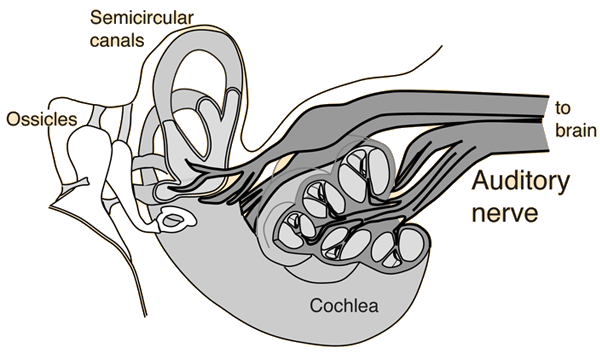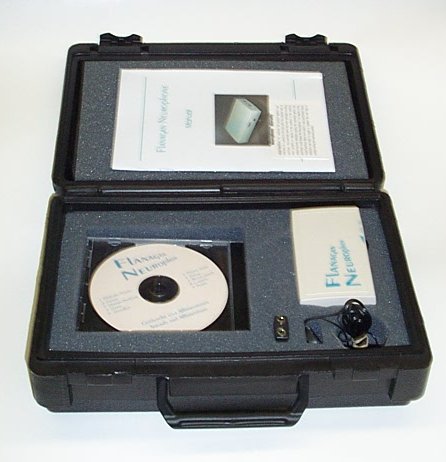Quote:
Originally Posted by pm
I've done some background research and now understand a bit more the concept of the application. After reading the background I have positive and negative impressions of the concept.
The positive: I believe the majority of the cost of their device is in profits and signal processing that may not be necessary to replicate (pink noise generators, etc) for this application. The basic concept of the circuit for the application you were describing (amplitude modulated audio signal) could easily be built for under $30 per channel (we could have a stereo version for $60!) as a prototype to test the concept.
I want to emphasize "to test the concept." I believe this is a very interesting concept with great potential, and for $30 it wouldn't hurt to try it. Before I mention the drawbacks, I just want to be clear that I am absolutely interested in trying this product.
I do have some big problems however. I first did some background research on Dr. Flanagan and found that some of his other inventions have come under intense scrutiny, including toxic supplements that are banned by the Food and Drug Administration in the U.S. His publications are generally found in "fringe" publications that are generally not peer reviewed and not reliable sources. He has many other inventions that are described as "snake oil". While this raises concerns, I chose to ignore his qualifications as I looked for information (keeping an open mind!).
I read about the concepts behind the neurophone and it is claimed to work through the vestibular system with electromagnetic waves (which cause hallucinations and health problems). I find this strange because the vestibular system is responsible for balance, not hearing (even though it is in the ear) and operates between 0.1 and 10Hz. Most parts of the human nervous system actually behave like filters (I model neuromuscular systems for my research, so I know this!), so it makes no sense that the vestibular system would work up to 10Hz, then not work between 10-30,000Hz and suddenly recognize a specific frequency in the 40,000Hz range. If it did work with ultrasonic frequencies, the vestibular system would not have the problem you were describing of being very dependent on which frequency it is set at, it would work with a range of frequencies (we operate on logarithmic scales, so in the ultrasonic range, the vestibular system should work over a range of many thousand hertz if it did work).
I read a bit of the Lenhardt article in Science magazine (the one cited on the neurophone site), and it confirmed my suspicions that this is a bone conduction device. While the neurophone site claims the neurophone doesn't work through bone conduction, the Science article states very clearly that it is bone conduction. Dr. Flanagan's experiments are not convincing (the beat frequency discussion), so I believe that bone conduction is much more likely than electromagnetic waves acting through the vestibular system as Flanagan explains. Bone conduction explains why you need to tune the frequency as you had described, since different people have different bone densities and geometries that will affect the very specific natural frequency of their bones.
Most importantly overall, I believe that the neurophone can work, but I think it would be good to move away from Dr. Flanagan's information. I believe the device works, but Dr. Flanagan's interpretation of WHY it works is incorrect. The advantage is that there is thorough, scientifically acceptable literature on bone conduction that will give us more specific information on how to modulate the audio signal. It also makes the implementation of the device more flexible. At this point, I believe it is more sensible to approach this as a bone-conduction device to guide the research and design.
|
If in my rambling i got something wrong or against the general scientific believes, feel free to correct me.
As you said, Strange man that Dr. Flanagan. A good question that is still not answered: If this device works that great; why are there still conventional hearing devices and cochlea implant surgery?
About bone conductance, from what i have seen, it does not need a carrierwave. The vibrate the audio spectrum directly to the cochlea, where the hairs inside pick it up as sound and is processed the old fashion way. So way a learning time? Is it maybe that the higher carrier wave makes for a better conductance. You would expect low frequencies are more suitable for it. Also, for maximum workings, it should sit as near as possible to the cochlea, which would place it just before your ear. In the case of more efficient bone conductance. You would expect that because of the different shapes and sizes of our skeleton (and thus different length pathways) it would be necessary to easily (for the user to) offset the carrierwave. As it seems that both the echofone and the neurophone does not allow to change the carrierfrequency, it's a save beth to say that one frequency fits all and in doing so it is not a "classic" bone conducting device. Also, when used to the neurophone, the pads could be placed anywhere on your body. In the case of bone conductance, that would be highly inefficient. And there are reports of people which are deaf (non function cochlea) that could hear with the neurophone.
About EMF; looking at the first (patent) schematic, there is no coil and the end for generating an EMF. So i believe that electromagnetic waves are not the case here.
In danger of becoming annoying by repeating myself. I excuse myself for being this reluctant. But i am trying to understand this thoroughly.
I understand now it is a plane inside the saccule that picks the signal up and that the plane has a resonance frequency of (+/- 40kHz, the magic frequency where after. That's way in our first setup, it should be adjustable. Once found, you could used a fixed frequency oscillating electronics because we have learned now to what frequency it should be tuned). As it resonates, the vibrating plane creates electrical pulses that are picked up by the auditory nerve. Now by modulating that resonance, you create wave like pulses that are similar to electrical music waves. Could it be because there are several nerve endings in that proximity that the brain does the filtering. And so, it needs to learn to see past the 10hz filter point to recognise the new audio stream? And that this explains the learning time? By new, i mean (seeing from inside the brain) misplaced audio pulses. Normally it receives the 20hz-20khz pulses from the neighbour nerve that is connected to the cochlea. Not this signal is also present as noise on the saccule nerve. This all seems very possible in my ears. The resonating theory. Funny thought. Because where resonating a plane, which is stiff to begin with, we could call it "burn in time".
There are some things not quit clear on what i have mentioned above. Can a high frequency travel through the body that easily. In other words, what is the resistance of the body to soundwaves depending on frequency (does resistance go up or down when freq. goes up). I don not know how the device is called in english (we dutch call it "echo") but the device uses ultrasone sound waves to make pictures of internal organs. Mostly used for checking on pregnant woman. This would show that ultrasone freq. do travel through our body. Maybe it uses our bone structure to travel in our case to get more efficiently to the saccule? And that is the reason it's called a bone conductance device?













